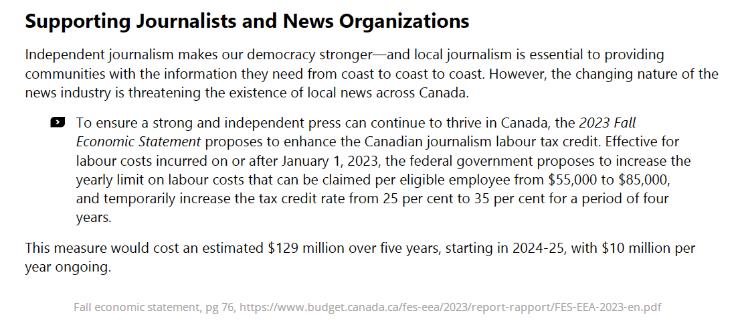
In a recent budget announcement, Freiland Bitch revealed a comprehensive set of measures signaling significant financial support for Canadian journalists. The Trudeau government is set to cover a substantial 55% of journalists’ salaries, albeit with a notable twist—this aid is exclusively directed towards newspapers and news organizations deemed “reliable.”
Under the newly amended Bill C-18, the government has responded to News Media Canada’s calls for increased support by enhancing the Labour Journalism Tax Credit. Formerly covering 25% of journalist costs up to $55,000 per employee ($13,750), the fall economic statement outlines a more generous system. Qualified Canadian Journalism Organizations, encompassing both print and digital platforms (excluding broadcasters), can now claim 35% of journalist expenditures, with a higher cap of $85,000 per employee.
This development marks a substantial boost, increasing the potential support to $29,750 per employee—an impressive surge of 116%. Importantly, this revamped support is retroactive to the beginning of the current year and is slated to run for a four-year period, incurring a total cost of $129 million, with $60 million allocated for the initial year alone.
However, a crucial point of contention arises as this support appears to favor mainstream media outlets, leaving independent news sources outside the purview of the financial relief. The government’s definition of “reliable” news sources has sparked debate, with concerns about potential biases and implications for media diversity.
As the Bill C-18 bailout takes its initial steps, questions linger about its impact on the media landscape. The increased tax credit per employee is poised to bolster traditional journalism establishments, yet the exclusion of independent outlets raises broader questions about the government’s approach to media support and the potential consequences for a diverse and vibrant journalistic ecosystem.
Source: